Onigiri in Paris Crazy expensive with crazy fillings but are they also crazy good?Taste test

Sticker shock hits our Japanese-born reporter in France, and it’s not the only surprise she got.
Our Japanese-language reporter Ikuna Kamezawa is an enthusiastic world traveler, and she likes to split her time in foreign lands both sampling the local cuisine and seeing how Japanese cuisine is handled overseas. So on a recent trip to Paris, as Ikuna was wandering through a branch of supermarket Monoprix, its Shaki Shaki line caught her eye.
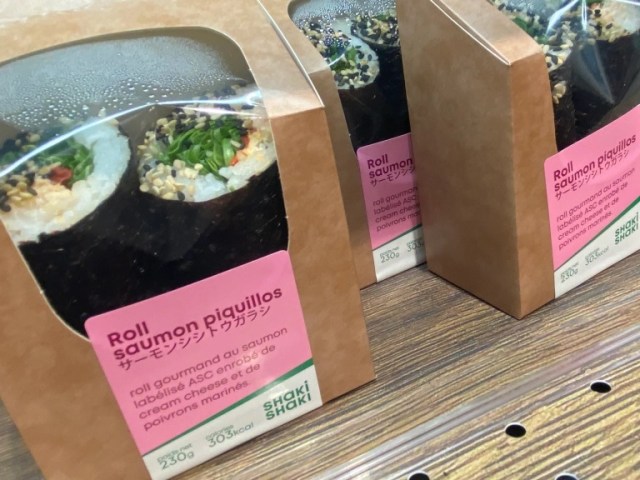
Shaki Shaki is a line of Japanese/Japanese-inspired foods (shakishaki is a Japanese word meaning crisp or crunchy, often used to describe freshly chopped cabbage). Some of the dishes were unfamiliar to born-and-raised-in-Japan Ikuna, like the “Ebi Satay,” which combines the Japanese word for shrimp (ebi) with Indonesian satay.

But what Ikuna immediately recognized were onigiri.
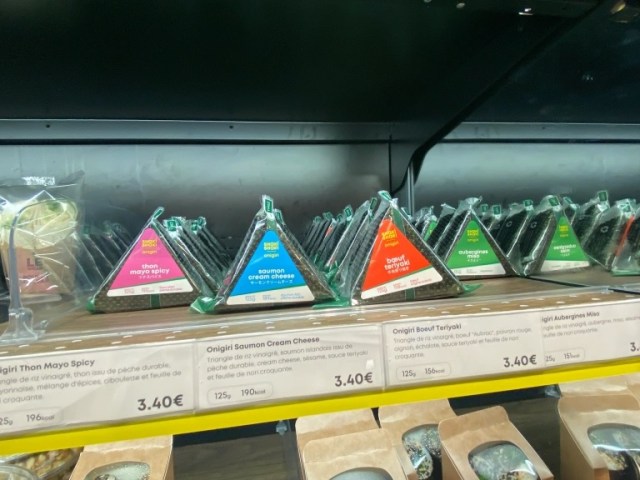
Onigiri (rice balls, though they can be triangular in shape too) are one of the absolute staples of pre-made corners at Japanese grocery and convenience stores. Whether you need to grab a quick breakfast, craving a between-meals snack, or looking to supplement your lunch or dinner with a little extra to eat, onigiri are there for you with a packet of seaweed-wrapped rice with a variety of fillings. Looking at Monoprix’s onigiri shelf, Ikuna felt like she’d been teleported back to Japan…
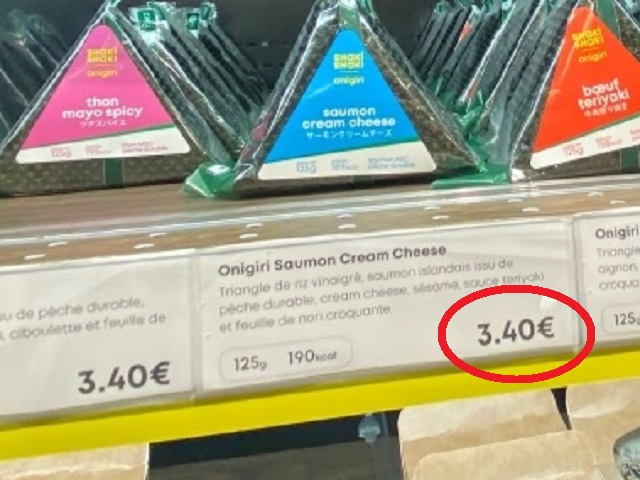
…until she noticed the price. Part of what makes onigiri so popular in Japan is that in addition to being tasty, convenient, and healthy, they’re affordable too, usually costing about 150 yen (US$1.10). The onigiri Ikuna found in Paris, though? 3.40 Euros, which works out to about 510 yen, nearly five times what onigiri go for in Japan!
Ikuna was shocked, but she was also hungry (hence why she was in a supermarket in the first place). Curious to see if these premium-priced onigiri could justify their expense, she decided to pick up a few and put them to the taste test, starting with the Salmon Cream Cheese.
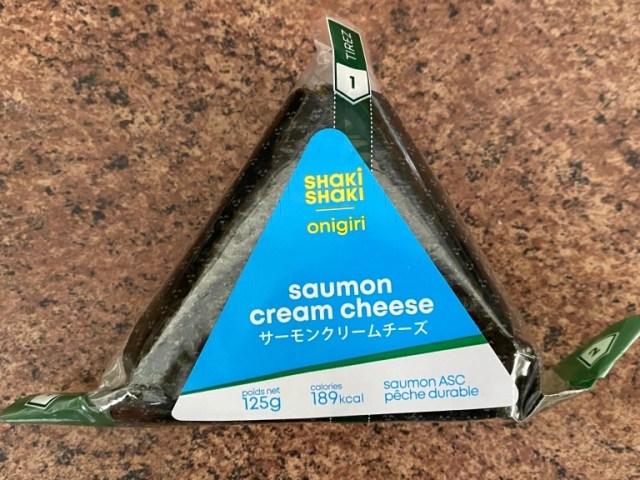
Like “Ebi Satay,” salmon cream cheese onigiri aren’t anything you’ll actually encounter in Japan. Still, the concept didn’t sound too far off from tuna and mayonnaise, a standard onigiri filling in Japan, so Ikuna decided to give the Monoprix’s a fair shot……and it turned out that the real shocker wasn’t the filling, but the rice itself. Instead of fluffy white rice, which is the norm for rice balls in Japan, the Salmon Cream Cheese onigiri is made with sumeshi, the vinegared rice used for making sushi.
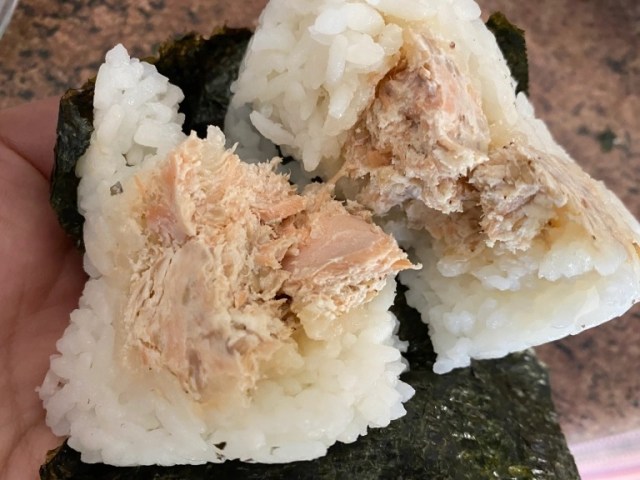
This was the first time Ikuna had had a sumeshi onigiri, and it threw her taste buds into confusion. Since it’s used for sushi, sumeshi and raw fish is a combination with established popularity in Japan, but sumeshi and cooked salmon didn’t mix as pleasantly on her palate, and just as she was trying to make sense of it, the incredibly powerful cream cheese slathered itself all over her taste receptors, leaving her almost wondering what the heck she’d just eaten.
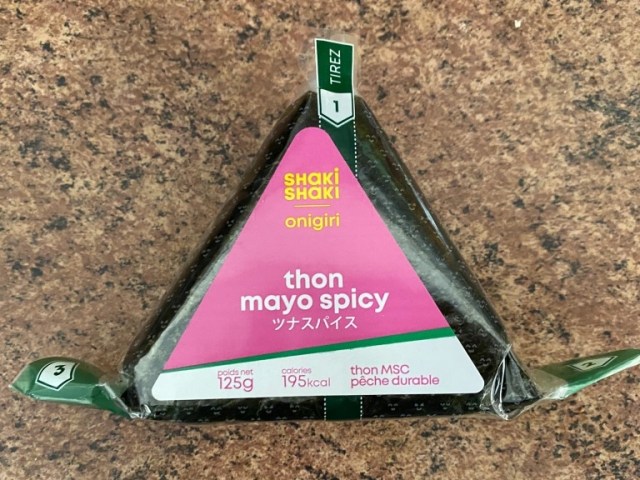
Next was the Tuna Spice, which lives up to its name with punishing gusto.
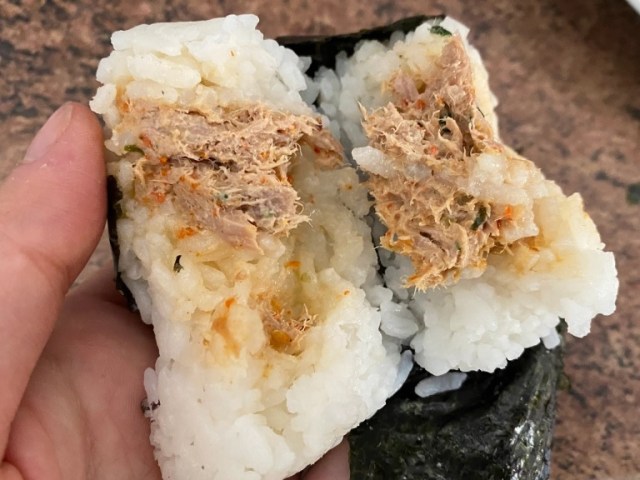
“So spicy!!! So spicy that I really don’t think this works as an onigiri filling” read Ikuna’s notes. Maybe we can chalk this one up to the prevalence of the overseas-developed “spicy tuna roll” at Japanese restaurants outside Japan. In the end, Ikuna was only able to eat all of this because chewing the rice helped dispel some of the heat.
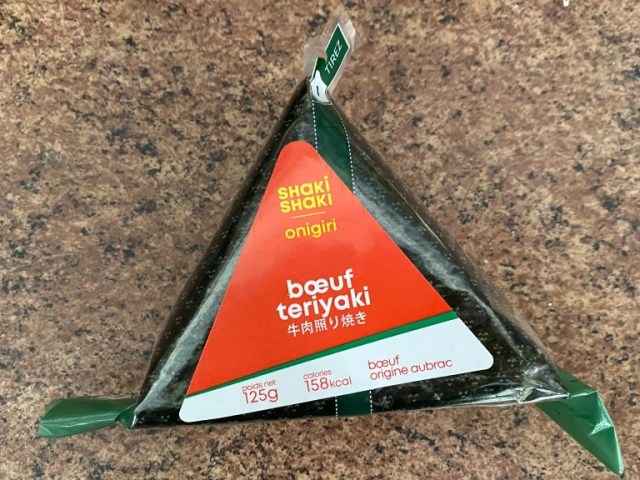
After her tongue cooled down, Ikuna next reached for the Beef Teriyaki. This is another filling you won’t find in Japan, since teriyaki beef is, like spicy tuna, something largely popularized by overseas Japanese restaurants.

This turned out to be Ikuna’s favorite of the bunch, and by a wide margin. In addition to teriyaki, the beef is seasoned with miso with sweet and spicy notes, which tasted exquisite.
So if the Beef Teriyaki was Ikuna’s favorite, what’s at the bottom of her personal ranking?

The Miso Eggplant. Once again, this isn’t a traditional onigiri filling in Japan, but that’s not what Ikuna had a problem with. The issue was that moisture from the eggplant leaked out, turning the rice into a soggy mess. The seasoning here was an odd mix of salty and sweet, giving way to a strangely sour finish.
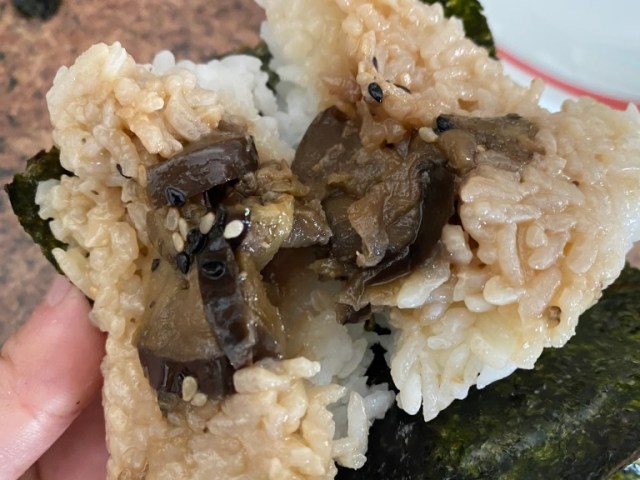
To get rid of some of the sogginess, Ikuna popped the Miso Eggplant onigiri in the microwave, more to dry it than heat it. This made it slightly more palatable, but she’s almost impressed that Monoprix is apparently able to sell this for the equivalent of 510 yen, estimating that you’d only be able to get people in Japan to consider buying it if you hammered down the price to 80 yen, around half of what onigiri normally sell for.
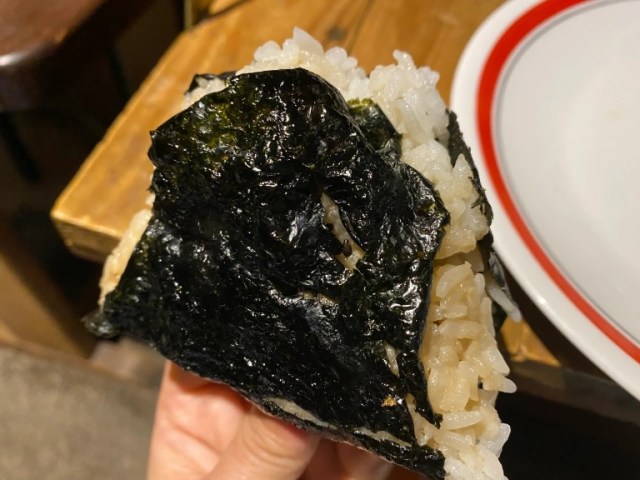
However, the sour taste of some of these onigiri hasn’t soured Ikuna’s feelings about Paris, or its overall food culture. She still raves about being able to walk into just about any random bakery and buy freshly baked baguettes that taste twice as good and cost half as much as they would at the places she shops at in Japan.

Still, the next time Ikuna is on an extended trip to France and starts getting onigiri cravings, she might just tough it out and wait until she gets back to Japan.
Photos ©SoraNews24
● Want to hear about SoraNews24’s latest articles as soon as they’re published? Follow us on Facebook and Twitter!
Credit:

0 comments:
Post a Comment